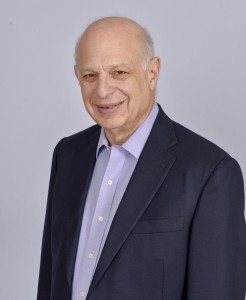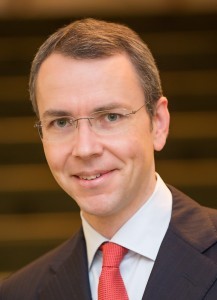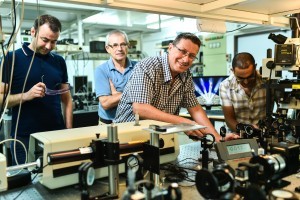Embryonic Development and Quantum Optics
Harvey Prize winners for 2015: Prof. Marc Kirschner and Prof. Immanuel Bloch
At a festive ceremony on June 5, 2016, the Technion awarded the Harvey Prize for 2015 to Prof. Marc Kirschner of Harvard University (USA) and Prof. Immanuel Bloch of the Max Planck Institute of Quantum Optics (Germany). The $75,000 prize, named after Leo Harvey (1887-1973), was established in 1972 as a bridge of goodwill between Israel and the nations of the world. It is awarded annually to men and women who have made a significant contribution to humanity. Around 17% of the prizewinners have gone on to win the Nobel Prize.
“Timing is everything”

Prof. Marc Kirschner, of the Department of Systems Biology at Harvard Medical School, will receive the prize for his groundbreaking and pioneering discoveries and contributions to three fundamental areas of modern biology: embryology, cell organization and the cell cycle.
Prof. Kirschner, born in 1945, earned his doctorate at the University of California, Berkeley (1971) and did his postdoctoral research at Berkeley and the University of Oxford. In 1972 he received an academic appointment at Princeton University, and then spent 15 years at the University of California, San Francisco, after which he joined Harvard Medical School, where he founded the Department of Systems Biology.
On his website, Prof. Kirschner wrote: “In the development of an organism, as in the theater, timing is everything. Imagine if, one night, the actors in a play were to miss every single cue, delivering each line perfectly, but always too early or too late. The evening would be a disaster. The same is true in embryonic development. Starting at the moment when sperm and egg meet, cells in the embryo send signals to each other to coordinate the growth of organs, limbs, and tissues. Not only do the signals have to be correct, they also must be perfectly timed. Otherwise, disasters like cancer can result.”
Using tools from the world of biochemistry and molecular and cellular biology, Prof. Kirschner analyzes the processes that control cells and tissues, and has made a substantial contribution to our understanding of the process of embryonic development: the characteristics of the cytoskeleton, controlling the cell’s life cycle and the embryonic development of vertebrates.
Between Light and Matter

Prof. Immanuel Bloch of the Max Planck Institute for Quantum Optics in Germany, will receive the Harvey Prize for fundamental contributions in the field of light and matter interactions in quantum many-body systems. In particular, he is recognized for his pioneering experiments realizing quantum simulators using cold atoms trapped in crystals of light, thereby establishing a new research field at the interface of condensed matter, atomic physics, and quantum optics.
Prof. Bloch, born in 1972, earned his doctorate in physics from Ludwig Maximilian University in Munich (2000) and has worked at some of Germany’s leading institutions: Ludwig Maximilian University, the Johannes Gutenberg University, and the Max Planck Institute of Quantum Optics.
Recently, Prof. Bloch experimentally demonstrated the “Zak Phase” in an array of cold atoms. The Zak Phase is named after Prof. Emeritus Joshua Zak of the Technion Faculty of Physics. Prof. Zak, who recently received the prestigious Wigner Medal, published an article in the journal Physical Review Letters in 1989, explaining the geometric phase of electrons in solid matter. Twenty-four years later, in 2013, Prof. Bloch managed to measure the phase in a lattice of cold atoms artificially formed with light.
Over the years, the Harvey Prize has been awarded to scientists from the US, Britain, Russia, Sweden, France and Israel. Prizewinners include Nobel laureate Mikhail Gorbachev, the former Soviet leader, who received the Harvey Prize for his efforts to reduce regional tension; Prof. Bert Sakmann (1992 Nobel Prize in Medicine); Prof. Pierre-Gilles de Gennes (1992 Nobel Prize in Physics); Prof. Edward Teller for his discoveries in solid state, atomic and nuclear physics; Prof. William J. Kolff for the invention of the artificial kidney; and Prof. Shuji Nakamura, 2014 Nobel Prize in Physics, for developing the blue LED.


